Corn has been an iconic part of human culture for thousands of years, and for good reason. Estimates put the domestication of corn over 5000 years ago in Mesoamerica. Its ancestor (a wild grass called teosinte) is barely recognizable compared to varieties most of us are familiar with. The temples that have been erected, the songs and diets that pay homage to and today's commercialized obsession with this unique grass are all testaments to the power of corn.
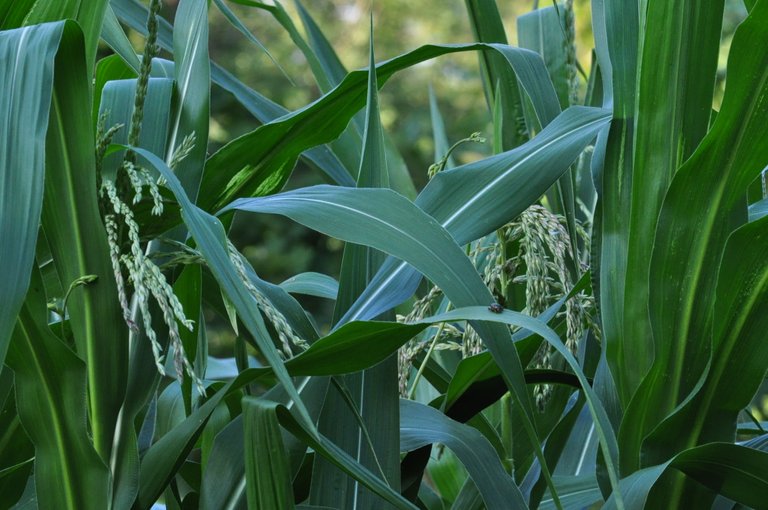
Why is there so much human energy focused on corn?
As a species we are obviously driven by meeting our base needs, our survival depends on it.
Until very recently, we have been limited by our ability to meet our base needs within the carrying capacity of the landscape.
Before the enslavement of petroleum as a source of energy, much of the labor to procure and process food was done by human power. There are of course examples of animal traction too, but not so in North America. Turkeys and dogs were domesticated, but there were no draft animals. Perhaps one of the reasons that so much attention has been placed on corn is because cultivating it allows a great deal of storable calories to be produced on a human scale.
Throughout time corn has been the focus of countless rituals, stories, pieces of art, cultural practices, celebrations and many other elements of human culture. Some people say that we are made from corn, and as we are what we eat this is literally true.
The history of food culture in America is rich and diverse. Many of the foods we eat globally are the results of plant domestication that happened in North America or Turtle Island as it is know to many of the First Peoples. This list also includes tomatoes, potatoes, beans, squash, peppers, peanuts, cacao (what chocolate is made from), vanilla and countless other food plants.
Corn has played an incredibly crucial role in American food culture across a large part of North and South America.
Before colonial contact, corn was cultivated from Canada to Peru and the many varieties of corn highlight the diversity of its widespread habitat. Much of that diversity lives on today in the fields, milpas, gardens and seed banks around the globe. It is because of the need to be locally adapted and resilient that we see such a high degree of diversity.
Because of corn's unique characteristics, it has become the core crop of much of the World's Agriculture
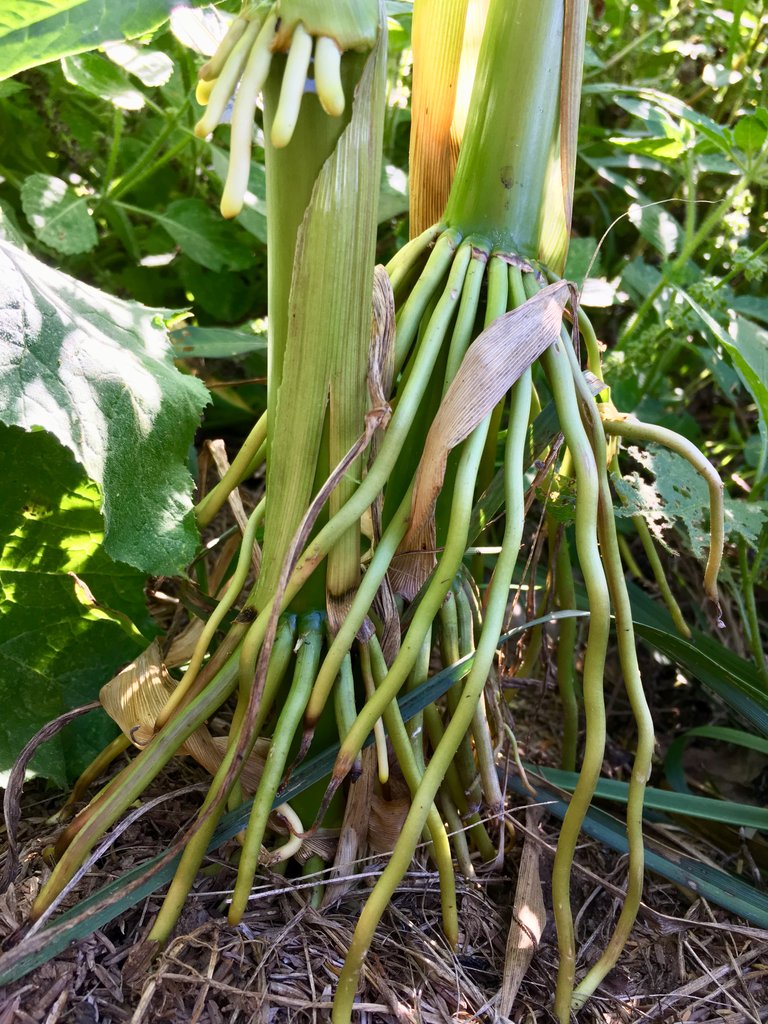
Corn feet on our homestead
Corn has an amazing ability to make lots of sugar.
This is one of the main reasons it has been the focus of so much industrial attention. It belongs to a relatively small group of plants known in botanical terms as a C4 plant (read all about it). This term refers to the carbon using pathways of how plants make sugar out of thin air (or really from the elements present...). This means it is more efficient. If making sugar from sun and if sugar is what we're after, we're bound to focus on the abundant sources in our environment.
Today we are extracting sugar and other components of corn in the form of ethanol, corn syrup, high energy animal feed (this is a whole 'nother conversation though) and many other derivatives that make their way into much of our processed foods. What is missing in this form of Agriculture that is so deeply indebted to petroleum (for providing the labor and fertility to keep the corn growing) is the human element.
"They tried to bury us but they didn't know we were seeds" - Origins unknown, shared by Rowan White
The robust nature of the seed, shoot and stalk is truly stunning and impressive.
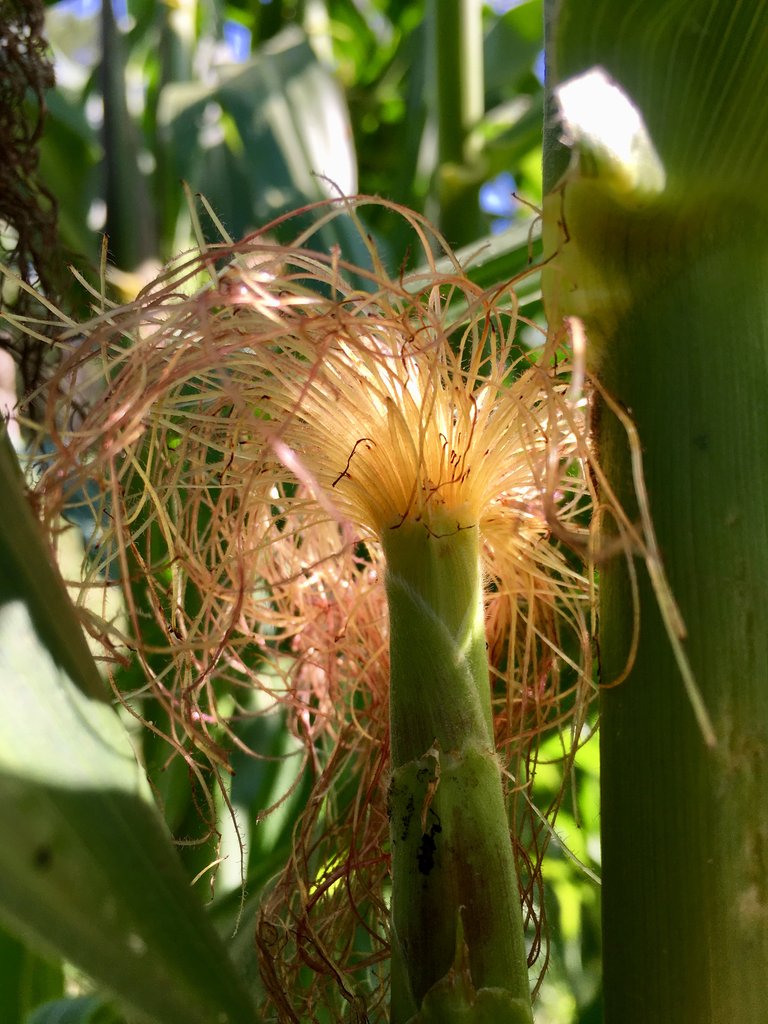
This is the first year I have ever grown corn. This has been a humbling and epic journey to see unfold. I have been a self identified growie for many years now, but this year I finally planted corn and joined a long and rich history of humans cultivating this gorgeous grass. Plus the seed was from a dear friend. She had saved it from her small plot and that makes this process immeasurably richer.
Wren and I enjoyed eating some locally grown popping corn last winter, and wanted to perhaps try popping some of our own. We also LOVE fresh corn tortillas and know the value in making them in the traditional manner of transforming a hard starchy seed into a warm soft tortilla through the alchemy of nixtamalization. Keeping that in mind, we set out to grow some corn.
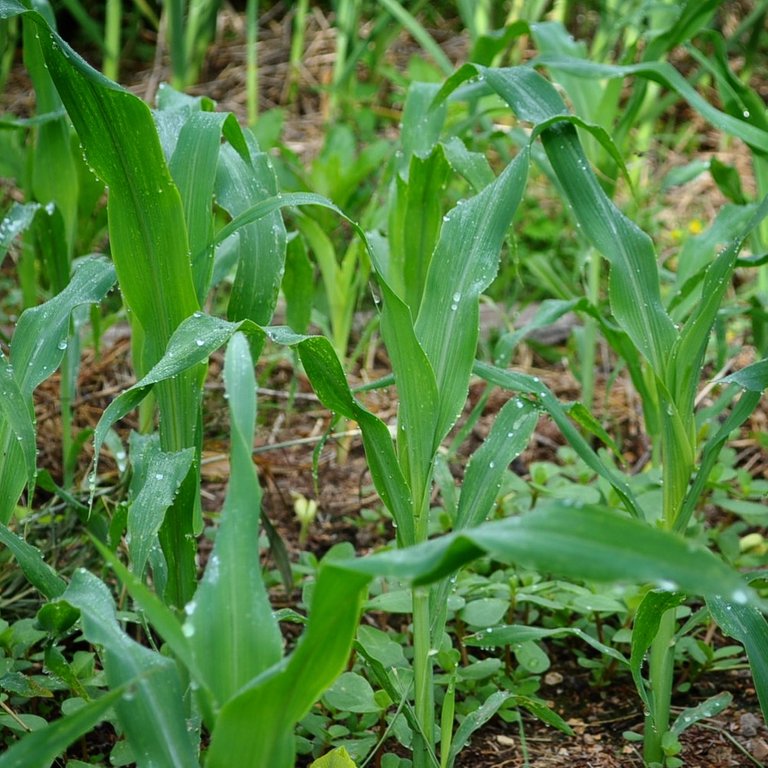
And season merged into season,
and we learned the life cycles of all around us,
like the moon, the face of each thing is in constant change,
and yet life goes into death a seed awaiting rebirth.
And season into season,
we grew into a nation of many lodges and cornfields,
and ceremonies were given to us,
as were beans and squash.
And we sat in council,
male and female,
to ponder the future of our children,
of our nation,
and again Creation heard
and answered with the voices of our elders.
And season into season,
like the sapling pine,
grew the thinking of our elders
into a Great Tree,
and the laws by which our nation was to live
became known as the Great Good.
and these laws were like seeds of corn,
each separate, yet bound to a single core,
and these laws were spoken often to our people,
so that none forget.
And the memory of these laws were woven into beaded belts,
like rows of seed corn,
and the words were said to the hearts and the minds of the people
as a living part of life,
and not mere words to drift away upon a breeze.......
.....The seed corn in Earth,
the newborn child,
the sun rising as ever to warm the good earth,
all these in promise to a scattered nation.
So it was spoken and remembered by a scattered people,
remnants of a nation.
So did they seek to keep the fires of the Great Good alive.
And even into today,
in the heart of this nation,
the Great Good lives,
held by a few threads of sinew,
which must be gathered into a strong and binding cord.
This sinew, these threads of life connecting elder to child,
and child to Creation,
is the meaning of our Mystery.
We, the elders, are gatherers of this thread,
we are the singers who send our voices to the directions,
calling our children to return,
to be reborn a nation.
Come home to us and touch our hands,
and life the soil and smell the rich damp earth,
yours forever in promise.
Return to us and dance the praise of the Great Good,
and sit with us in council close to the warming hearth.
And season follows season,
and born a nation we plant the sacred corn and do you see your elder
back bent with age,
hoe in hand
slowly walking to the cornfield?
And will you bend beside him and hear his whispered words,
that he welcomes home his children and that now,
when his eyes close upon that final sleep,
his journey will be in peace?.... ...Counsel wisely with your elders,
then counsel your mind and heart
and do not trust yourself to speak of the Great Good
until your heart and your mind are one.
Offer advice only if you have tasted of the turmoil in question,
and be strong inside and truly believe
before using the outward power of your voice
to convince others of your truth.
And when a feast is given,
thank the Creation that people have food to eat.
And eat the corn and squash and beans
knowing that your back has bent
to the rhythm of the hoe.
And at the fire's warming glow
be pleased that you have shared
in the gathering of the fuel to keep warm the lodge.
And know and praise the seasons
in the knowledge that you
have shared their constant change." -excerpts from "White Corn Sister" by Peter Blue Cloud (as shared from Rowan White)
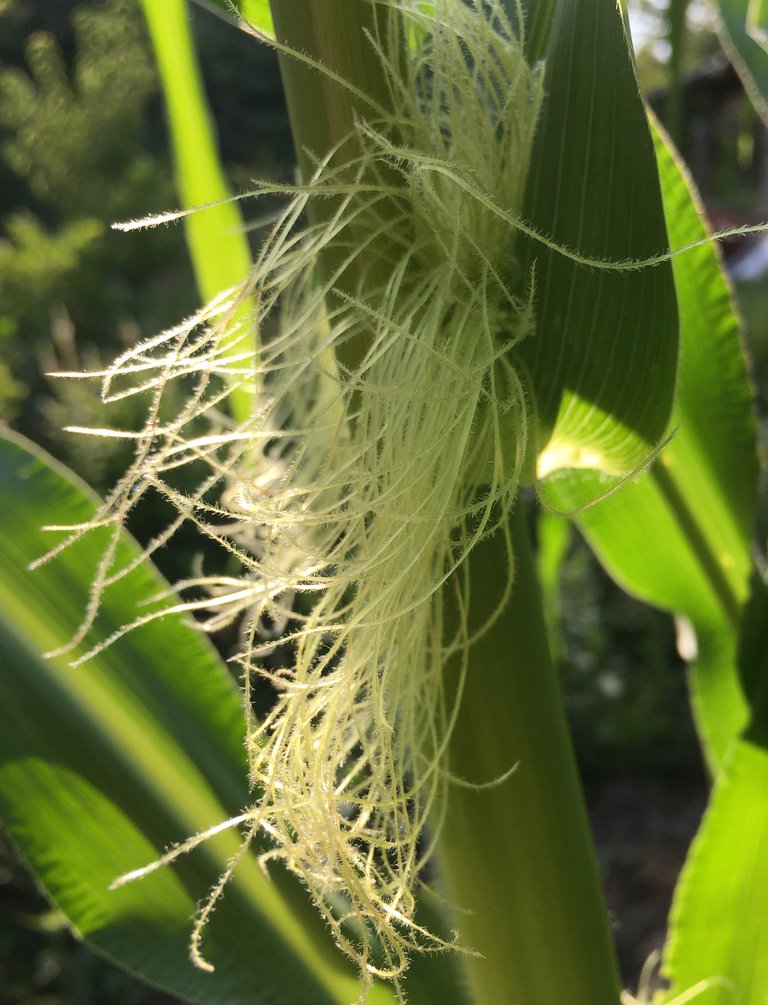
Corn has potential and majesty unlike other garden friends and lends itself well to cultivation.
Seeds are an essential part of our culture, and we depend on them for survival. As a modern culture, we have been divorced form the sacred and nourishing act of planting and saving seeds. Instead we are part of a giant science experiment where we tamper with genetic boundaries and create organisms that would never be found in nature and create potentially deadly and irreversible effects for many lifeforms, both micro and macro. This is all in an effort to feed the insatiable drive for expansion and growth that a capitalistic economy demands.
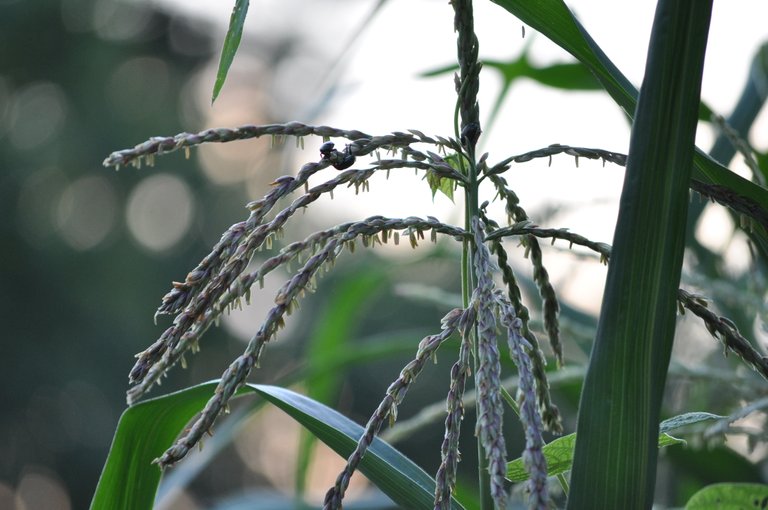
We were given seeds from a dear friend of an heirloom multi purpose variety (flint and popping), glass gem to be specific. She grew and tended corn in her garden the year before and now we continue the long lineage of humans sharing seeds. We are honored to take part in the process of preparing and feeding the soil, seeding, watering, weeding, tending, visiting and witnessing the beauty of corn. Like all seeds, each one has a story. Below is a little bit from the story of how glass gem in all it's splendor came to find it's way into our garden:
"Like many heirloom treasures, Glass Gem corn has a name, a place, and a story. Its origin traces back to Carl Barnes, a part-Cherokee farmer living in Oklahoma. Barnes had an uncanny knack for corn breeding. More specifically, he excelled at selecting and saving seed from those cobs that exhibited vivid, translucent colors. Exactly how long Barnes worked on Glass Gem—how many successive seasons he carefully chose, saved, and replanted these special seeds—is unknown. But after many years, his painstaking efforts created a wondrous corn cultivar that has now captivated thousands of people around the world." source
Diversity is what makes the world possible, keeping a diversity of seeds alive is crucial for our survival
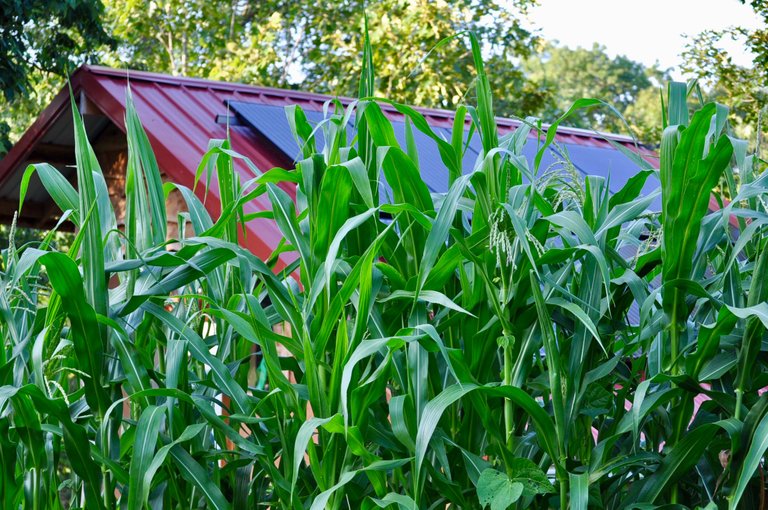
9 ft tall stalks looking stately in front of our solar shed
This is our first foray into grain production and we'll see what the harvest is like. In an effort to explore the variety of options to adapt to a changing climate while meeting the ever present need of hunger, we are putting this flint corn on the list of possible allies. We are both happy to be living with some stately 9' tall stalks this year and have loved seeing them grow.
We encourage each one of you reading to consider keeping some elements of diversity alive by forging a relationship to it. This heritage variety of corn is one way we are choosing a more diverse and abundant future.
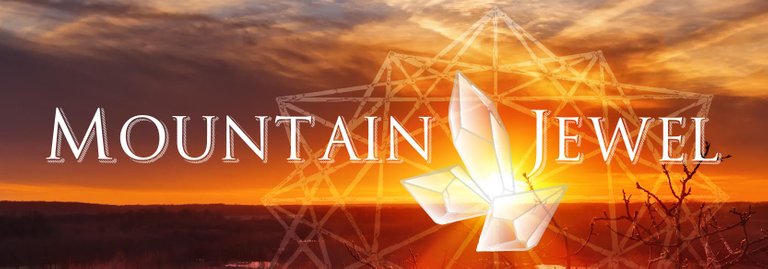



I always grow grain corn for winter storage. I find it a lot easier to grow and store dried corn than any other crop. And yes, it is a beautiful plant.
I am also growing a corn cousin this year, sorghum for the grain heads.
yes, that's fantastic to hear. what will you do with the sorghum heads? i grew some last year and it was very satisfying! do you store these crops for animal feed or personal use?
The plan is some human food if we beat the birds.
You should post a recipe or two on how you use your dried corn.
Glass Jem! Nice ❤🌸💜💙💚 what an epic ode to corn! Well done @mountainjewel 💥👑💎
<3 <3 <3 thankee!!
You're welcome!! Can't wait to see pics of harvested cobs! ❤❤❤
I grew corn for a couple years many years ago. the raccoons got most of it, and it took up a LOT of room in the garden. So I quit growing it.
But I am fascinated with the glass gem type, it's so pretty! Looking forward to seeing yours!
darn raccoons. my approach nowadays is to eat whatever is eating my food. Tried that with hornworms, not so tasty... Raccoons would make for better eating I suppose.
It does take up quite some room, but the food value is pretty outstanding (if it's properly treated with lime). It's always a toss-up and evolution over the years to see what works, what you like to eat and how much space and energy you have right?
We're trying it out and are excited to see how the harvest turns out.
First, love the Peter Blue Cloud quotes! Second, corn if used as a grain crop creates a lot of biomass for fuel or mulching. Have you thought about how you plan to use the stalks and leaves?
Glad you enjoyed the quotes. so poetic and rich.
We will perhaps compost the biomass as it's in short supply on the homestead. No shredder to speak ouf so we'll fold it into a pile.
Amazing. I love how corn is so tied to the indigenous peoples of America. We just can't get enough water to it here, and we aren't too succesful at growing it! A great post Ini. x
What an excellent post!!!
I couldn't agree more with you to all the aspects of your reasoning. Thank you for sharing such a thorough post! Very well-written @mountainjewel :)
P.S. "They tried to bury us but they didn't know we were seeds"
This is written by a Greek poet named Dinos Christianopoulos and it looks like that in Greek:
και τι δεν κάνατε για να με θάψετε
όμως ξεχάσατε πως ήμουν σπόρος
This was a really lovely post i enjoyed it a lot. i really want to start a garden again :)
geez....absolutely GORGEOUS!!!!!! you captured the essence...and spirit of this sacred medicinal plant!!!!!!! re steemed with pure JOY!!!!!! thank you for alllllllll you share you two!!!!!!!! heart = blown!